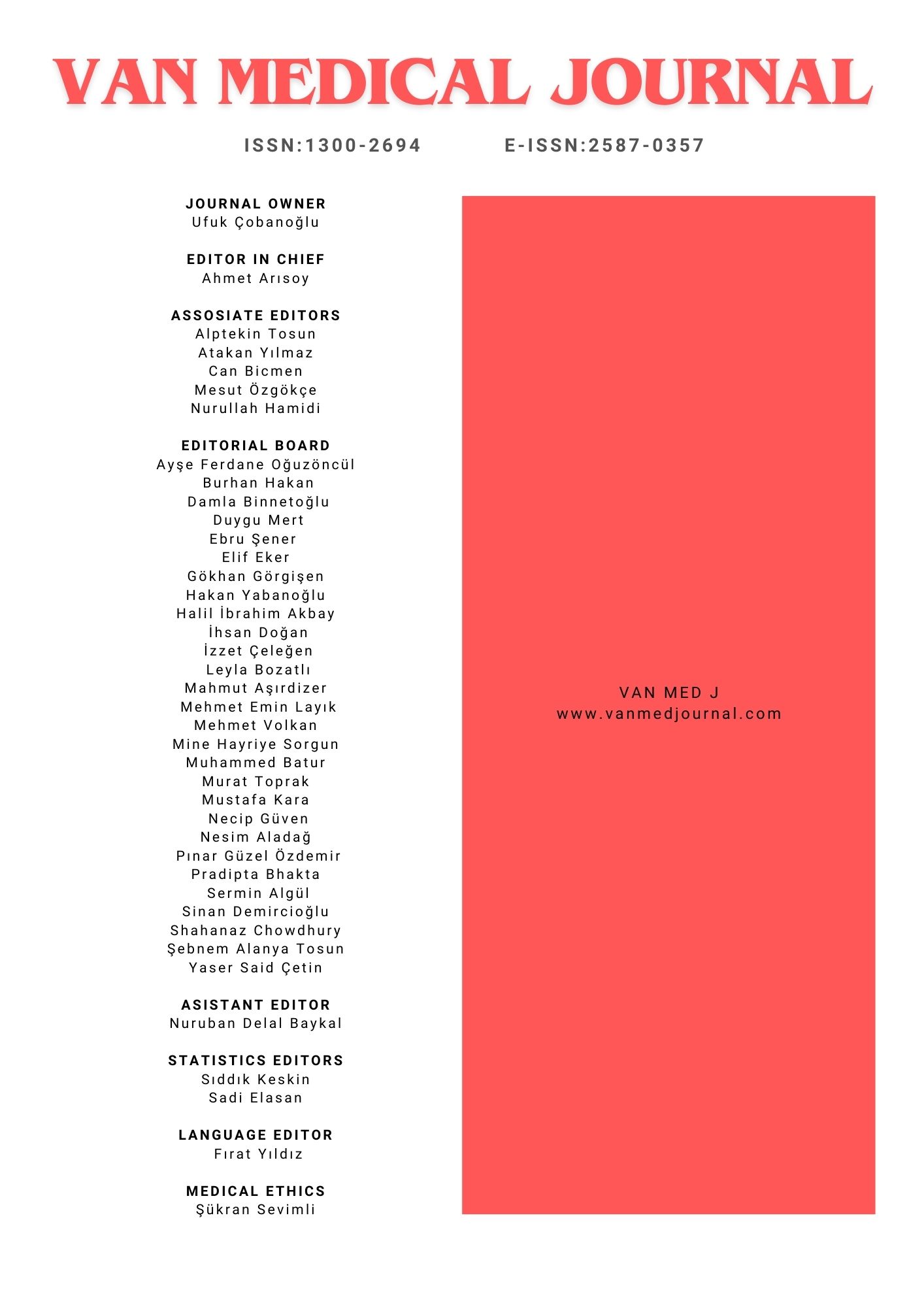Lung Hydatid Cyst Surgical Treatment: Our Clinical Experience
Erhan Durceylan1, Duygu Mergan iliklerden21Eskisehir Osmangazi University, School Of Medicine, Department Of Thoracic Surgery2Van Yüzüncü Yıl University, School Of Medicine, Department Of Thoracic Surgery
INTRODUCTION: In this study, the data of 29 patients who undervent surgery for pulmonary hydatid cyst in Van Regional Training and Research Hospital were analyzed retrospectively
METHODS: Patients who underwent surgery with the diagnosis of hydatid cyst in Van Regional Training and Research Hospital between May 2015 and October 2017 were evaluated in terms of age, sex, localization and size of the cyst, symptoms at admission, type of surgery and postoperative hospital stay.
RESULTS: Twenty patients (69%) were male and 9 (31%) were female. The mean age was found to be 21.5 (8-58).The most common symptom was cough (58.6%) and chest pain (51.7%). Hydatid cyst was localized in right (55.2%) in 16 patients and in left hemithorax (48.8%) in 13 patients. 22 patients (75,9%) were operated by cystotomy and capitonage; 3 patients (10,3%) were operated by enucleation and capitonage. Cystotomy without capitonage was used in 4 patients (13,8%).
DISCUSSION AND CONCLUSION: The treatment of pulmonary hydatid cyst is surgical unless it is contraindicated. The basic principles of surgery should be the removal of the cyst content, the closing of the bronchial openings and the management of the remaining potential cavity. The use of postoperative albendazole is effective in preventing recurrences.
Akciğer Hidatik Kisti Cerrahi Tedavisindeki Klinik Deneyimlerimiz
Erhan Durceylan1, Duygu Mergan iliklerden21Eskişehir Osmangazi Üniversitesi Tıp Fakültesi, Göğüs Cerrahisi Ana Bilim Dalı, Eskişehir2Van Yüzüncü Yıl Üniversitesi Tıp Fakültesi, Göğüs Cerrahisi Ana Bilim Dalı, Van
GİRİŞ ve AMAÇ: Çalışmamızda Van Bölge Eğitim ve Araştırma Hastanesinde, akciğer kist hidatiği nedeni ile opere edilen 29 hastanın verileri retrospektif olarak incelendi.
YÖNTEM ve GEREÇLER: Mayıs 2015-Ekim 2017 tarihleri arasında Van Bölge Eğitim ve Araştırma Hastanesi’nde akciğer kist hidatiği tanısı ile ameliyat olan hastalar yaş, cinsiyet, kist lokalizasyonu ve boyutu, başvuru sırasındaki semptomları, cerrahi teknik, postoperatif yatış süreleri açılarından değerlendirildi.
BULGULAR: Hastaların 20’si (%69) erkek, 9’u (%31) kadındı. Yaş ortalaması 21,5 olarak tespit edildi (8-58). Başvuru sırasında en sık karşılaşılan semptom öksürük (%58,6), ikinci sırada göğüs ağrısı (%51,7) olarak saptandı. Hidatik kist 16 hastada sağ (%55,2), 13 hastada sol hemitoraksta (%48,8) yerleşimli olarak saptandı. 22 hasta (%75,9) kistotomi ve kapitonaj; 3 hasta (%10,3) enükleasyon ve kapitonaj yöntemi ile opere edildi. 4 hastada (%13,8) ise kapitonajsız kistotomi yöntemi kullanıldı.
TARTIŞMA ve SONUÇ: Akciğer hidatik kistinde tedavi yöntemi kontrendike olmadığı sürece cerrahidir. Cerrahideki temel prensipler kist içeriğinin çıkarılması, bronş ağızlarının kapatılması ve sonrasında kalan potansiyel boşluğun yönetimi şeklinde olmalıdır. Postoperatif albendazole kullanımı nükslerin önlenmesinde etkilidir.
Corresponding Author: Erhan Durceylan, Türkiye
Manuscript Language: Turkish

